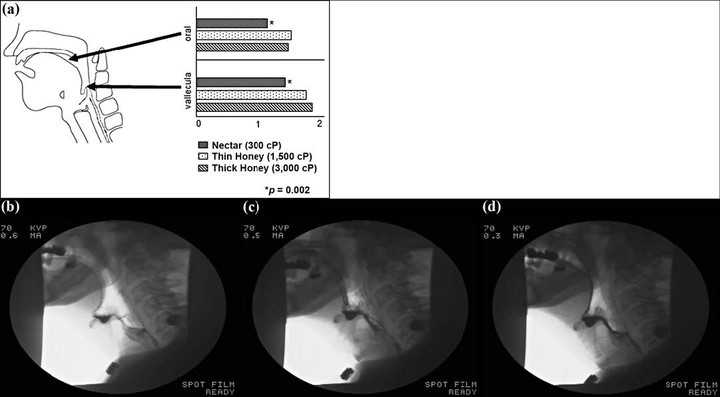Comparison of standardized bariums with varying rheological parameters on swallowing kinematics in males

Abstract
This study measured dose-response of a range of commercially available liquid barium materials designed for use in videofluoroscopic oropharyngeal swallowing assessments, particularly as they relate to the necessity of adding a thickening agent for swallow safety. A group of 25 adult males representing various medical diagnoses consented to participate, with 16 qualifying to complete a videofluoroscopic swallowing assessment with liquid barium materials of three viscosities (nectar: 300 cP, thin honey: 1,500 cP, thick honey: 3,000 cP). Outcome measures included airway invasion (Penetration-Aspiration score), postswallow residue, and patient preference. Penetration-Aspiration and residue scores did not significantly differ between thin honey and thick honey bariums. Significantly more severe airway invasion was observed with nectar boluses than with two levels of honey boluses (p < 0.001). Significantly more residue was observed in the oral cavity (p < 0.002) and valleculae (p < 0.001) with thin and thick honey bariums than with nectar barium. Thin honey was rated as ’easy’ or ‘average’ to drink by 67% of subjects, compared with 54% for thick honey. This study supports the use of thin honey barium over thick honey barium during videofluoroscopic swallowing assessments because the two honey bariums were comparable in terms of airway protection and postswallow residue in the oropharynx and the thin honey was preferred by patients.